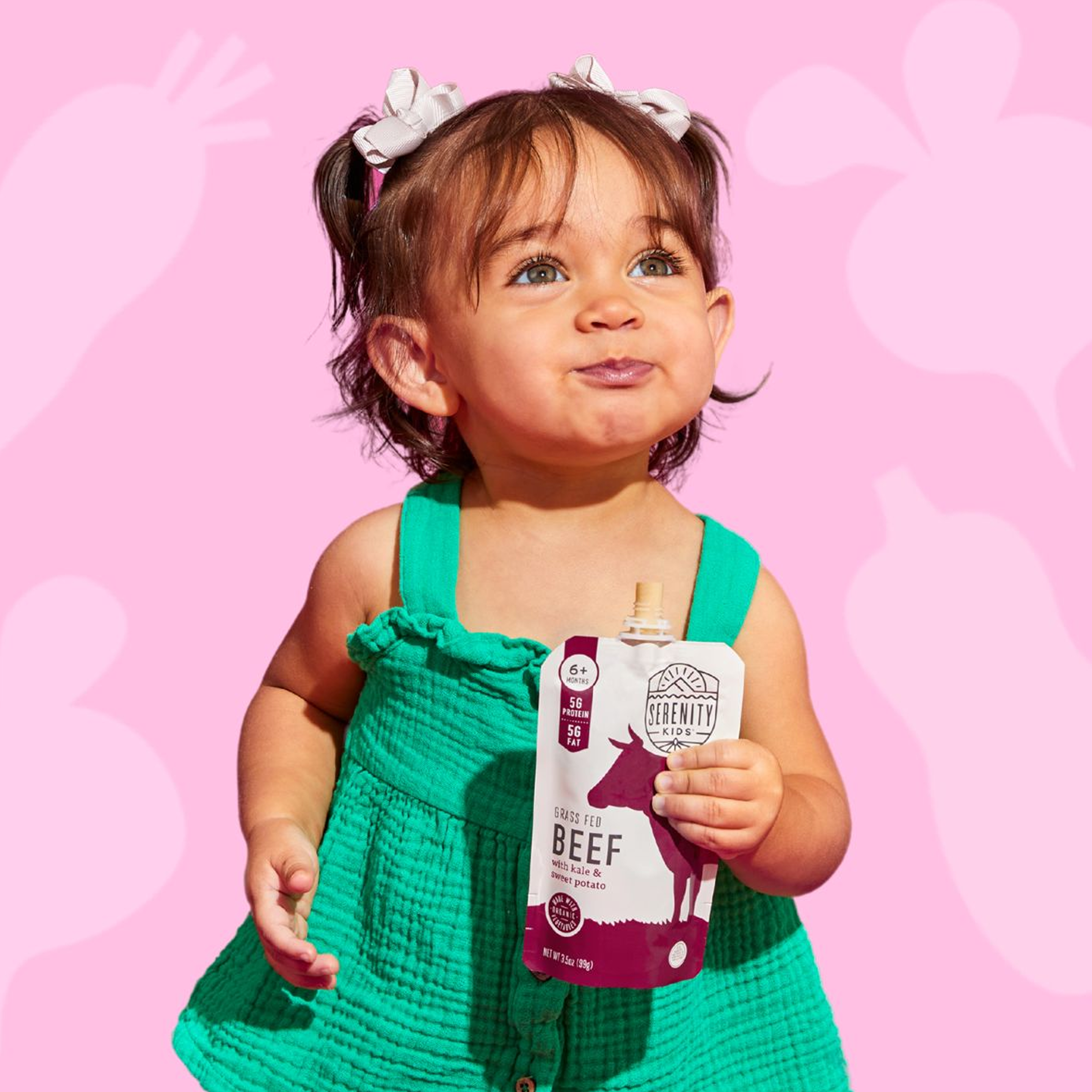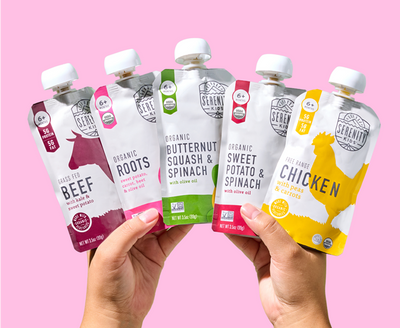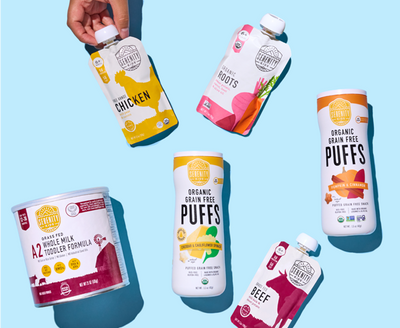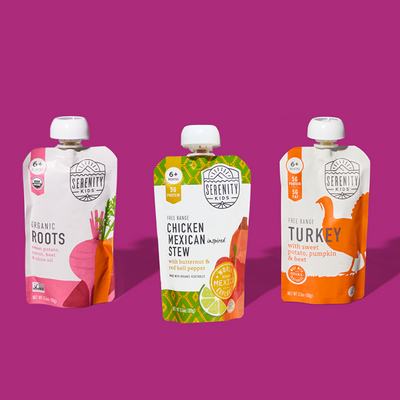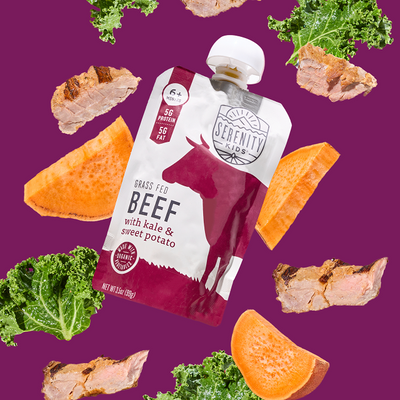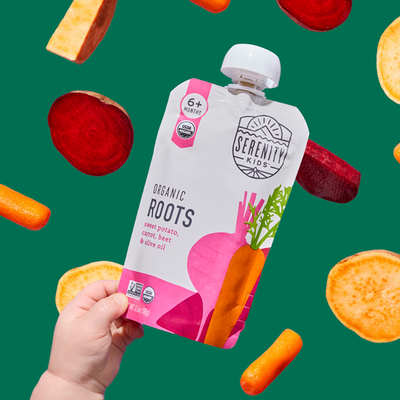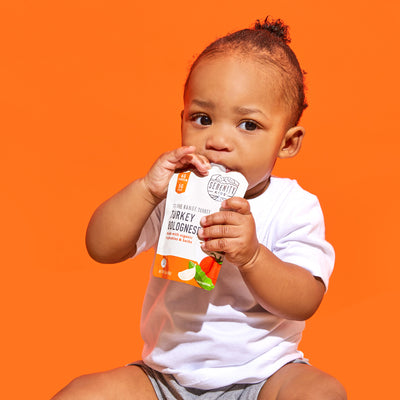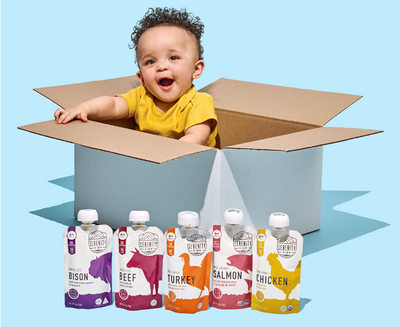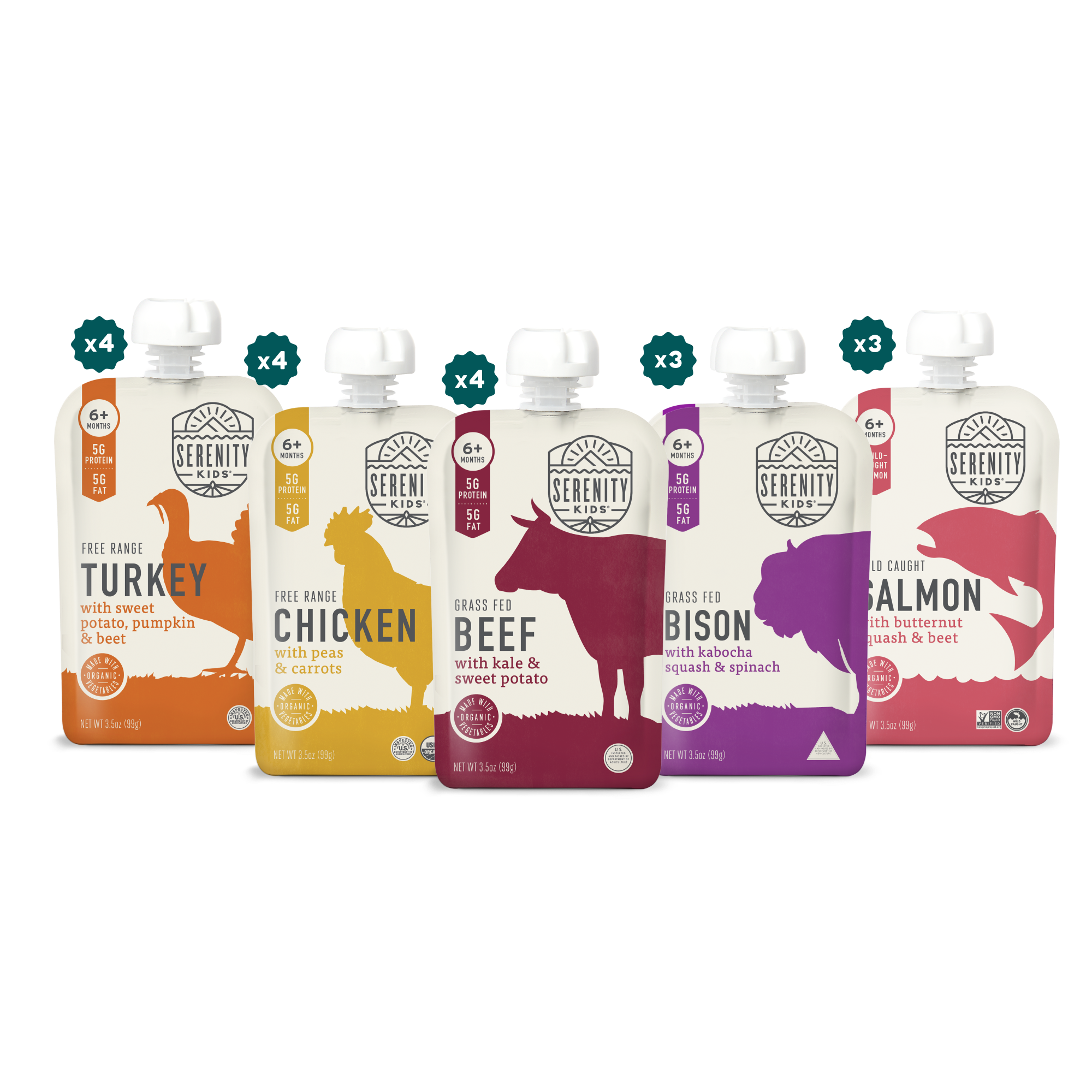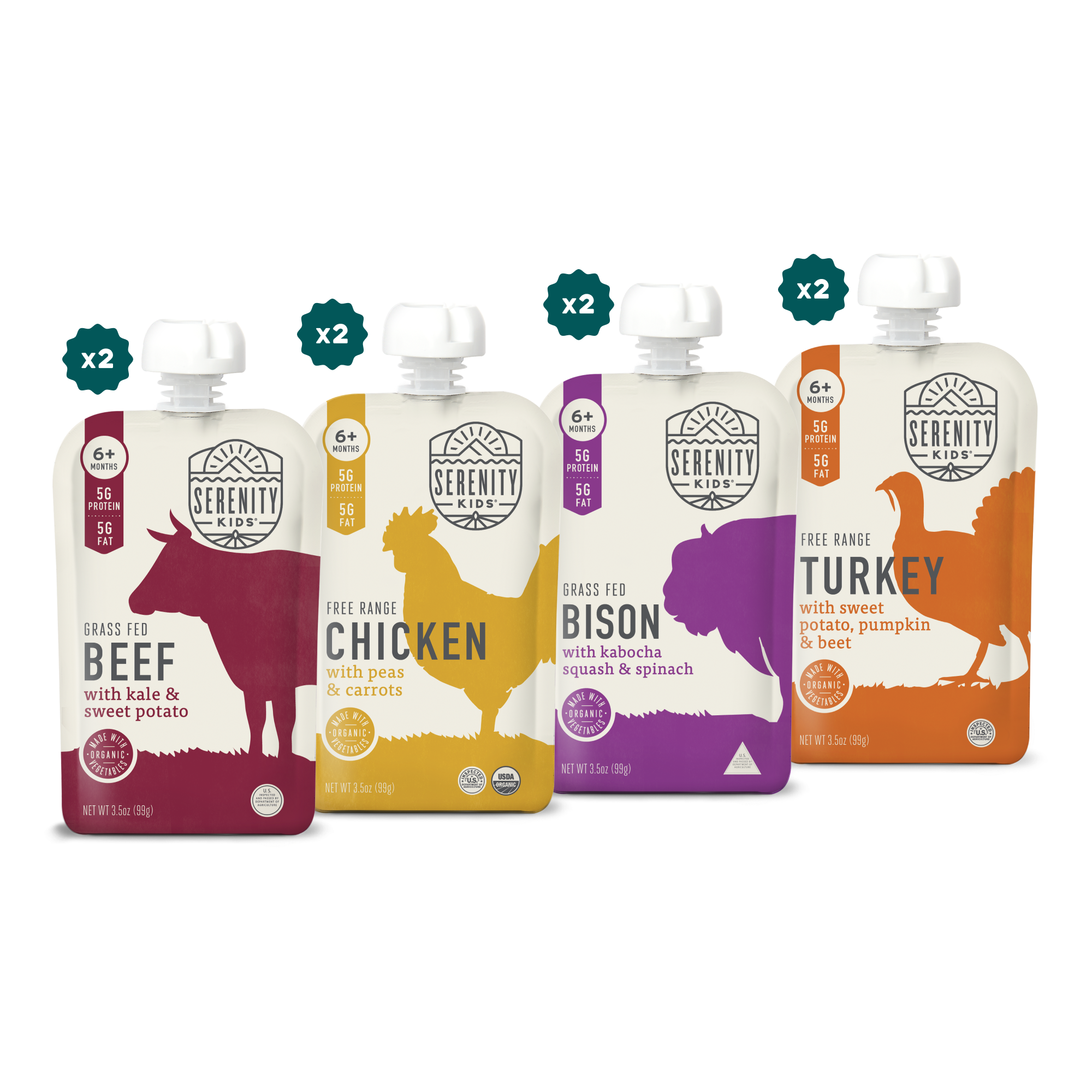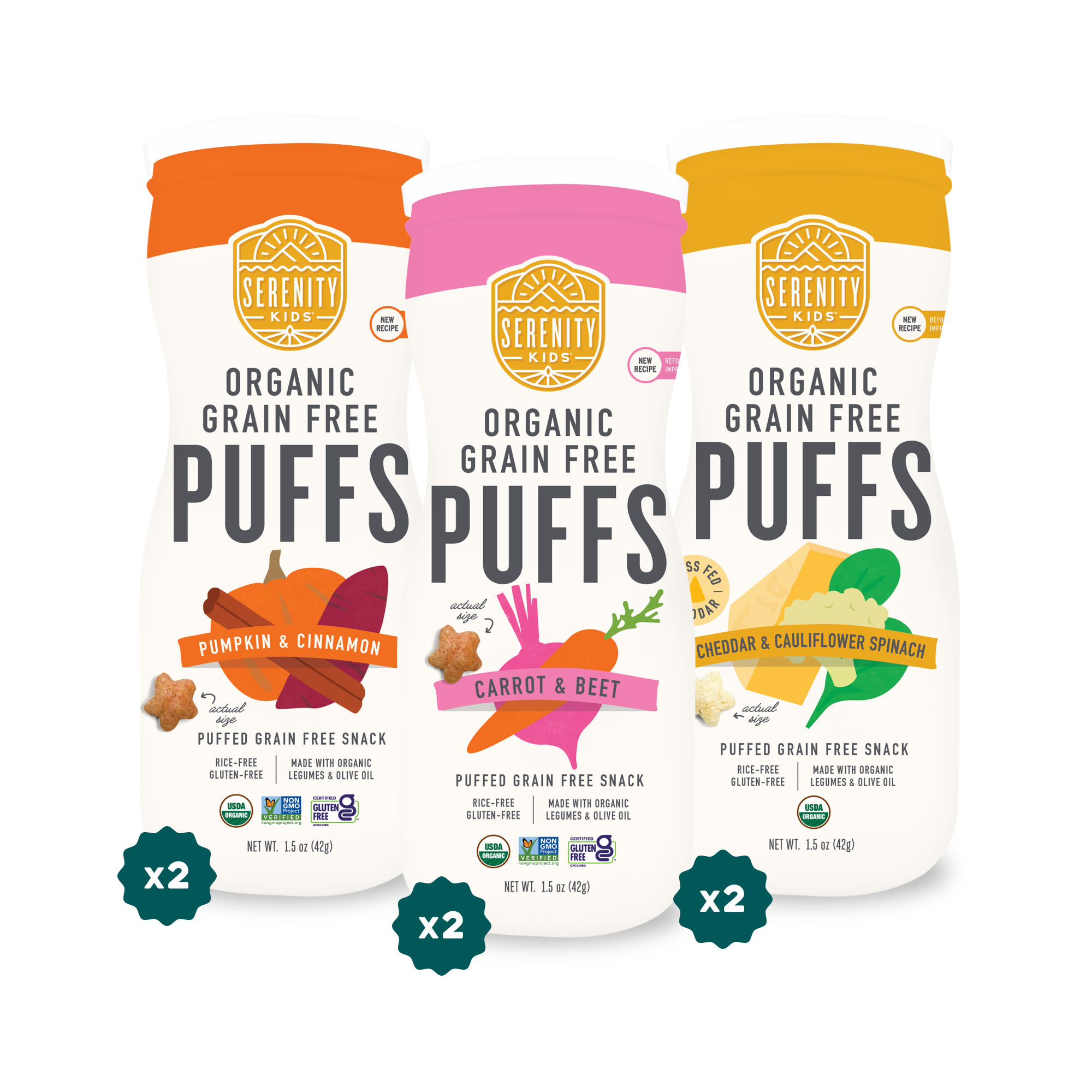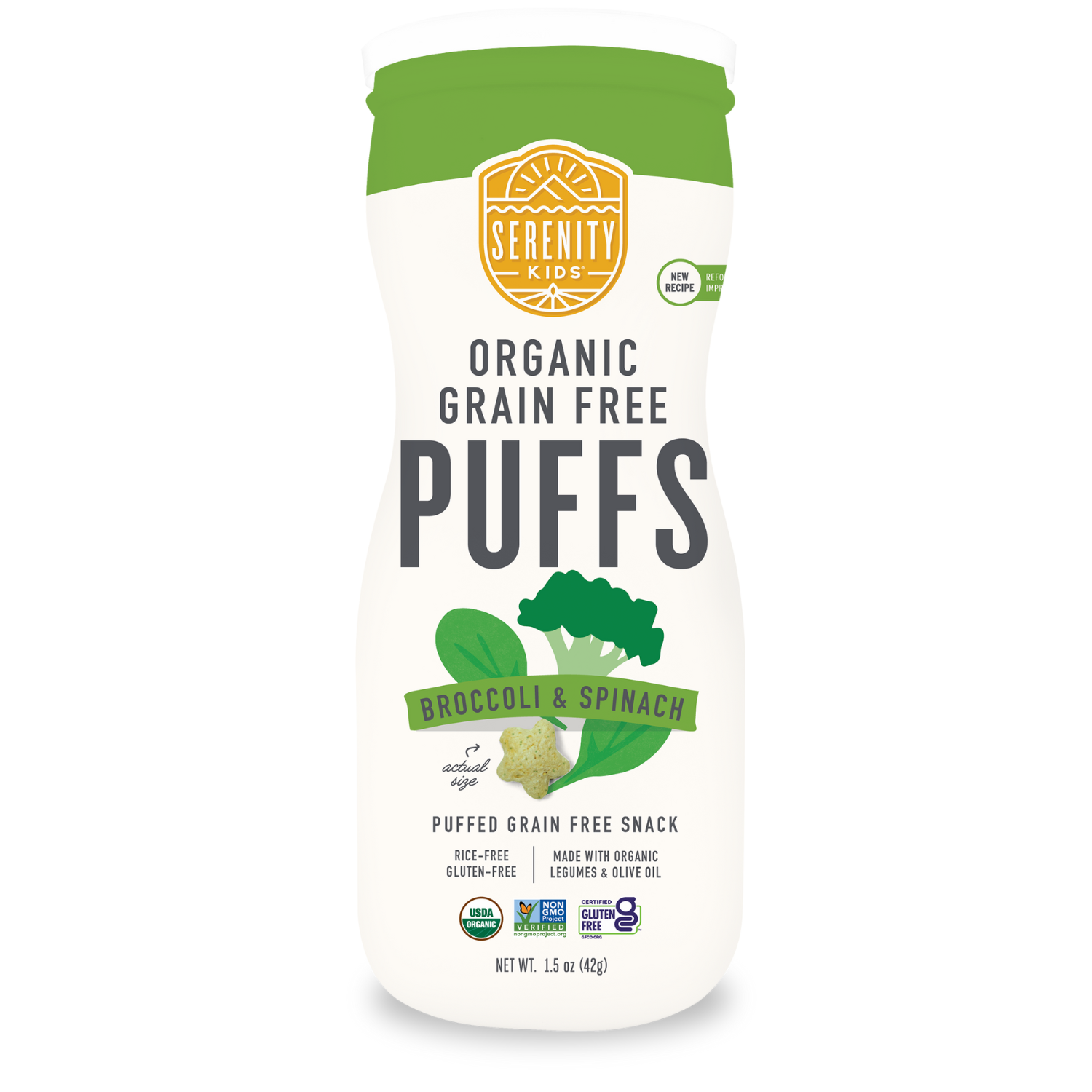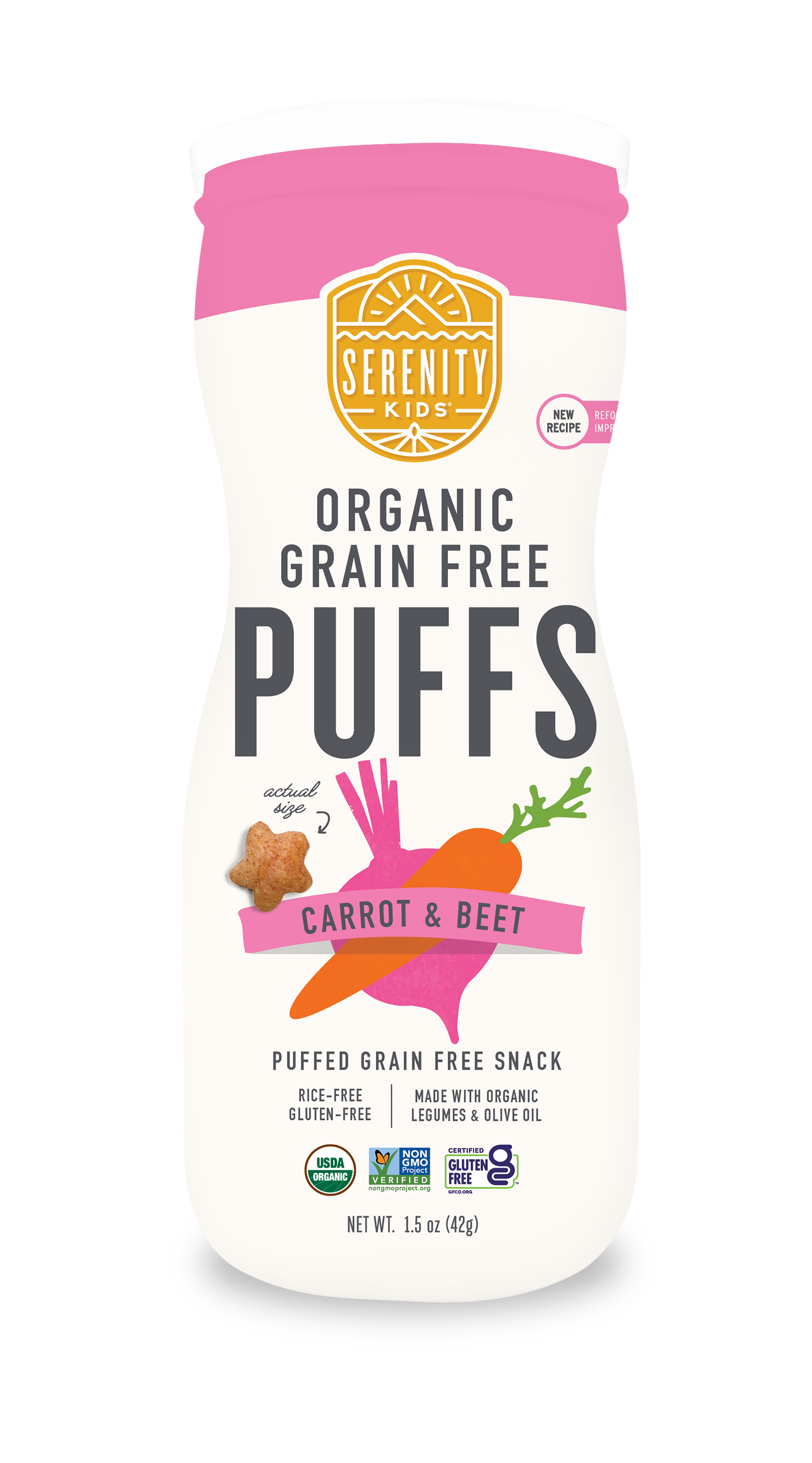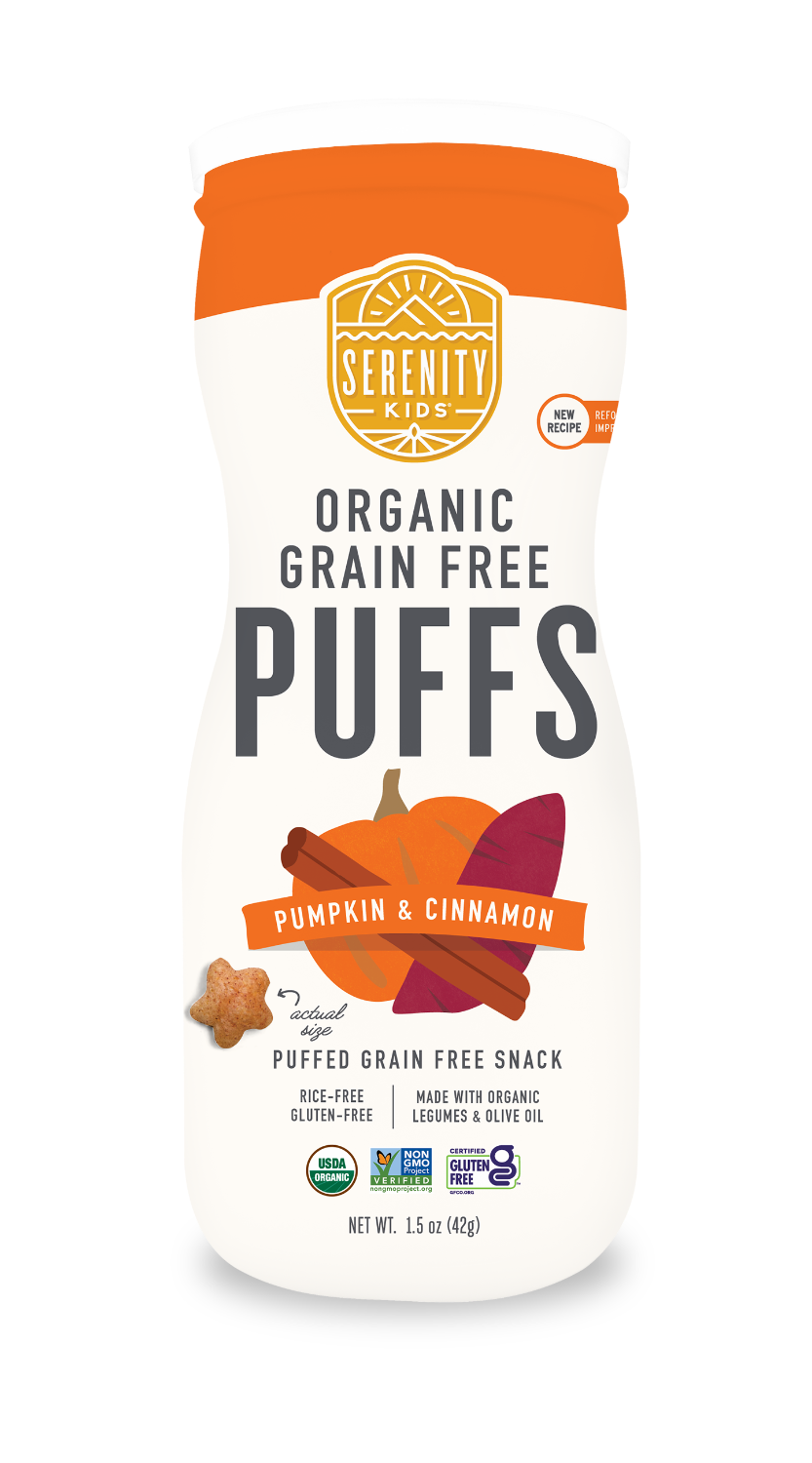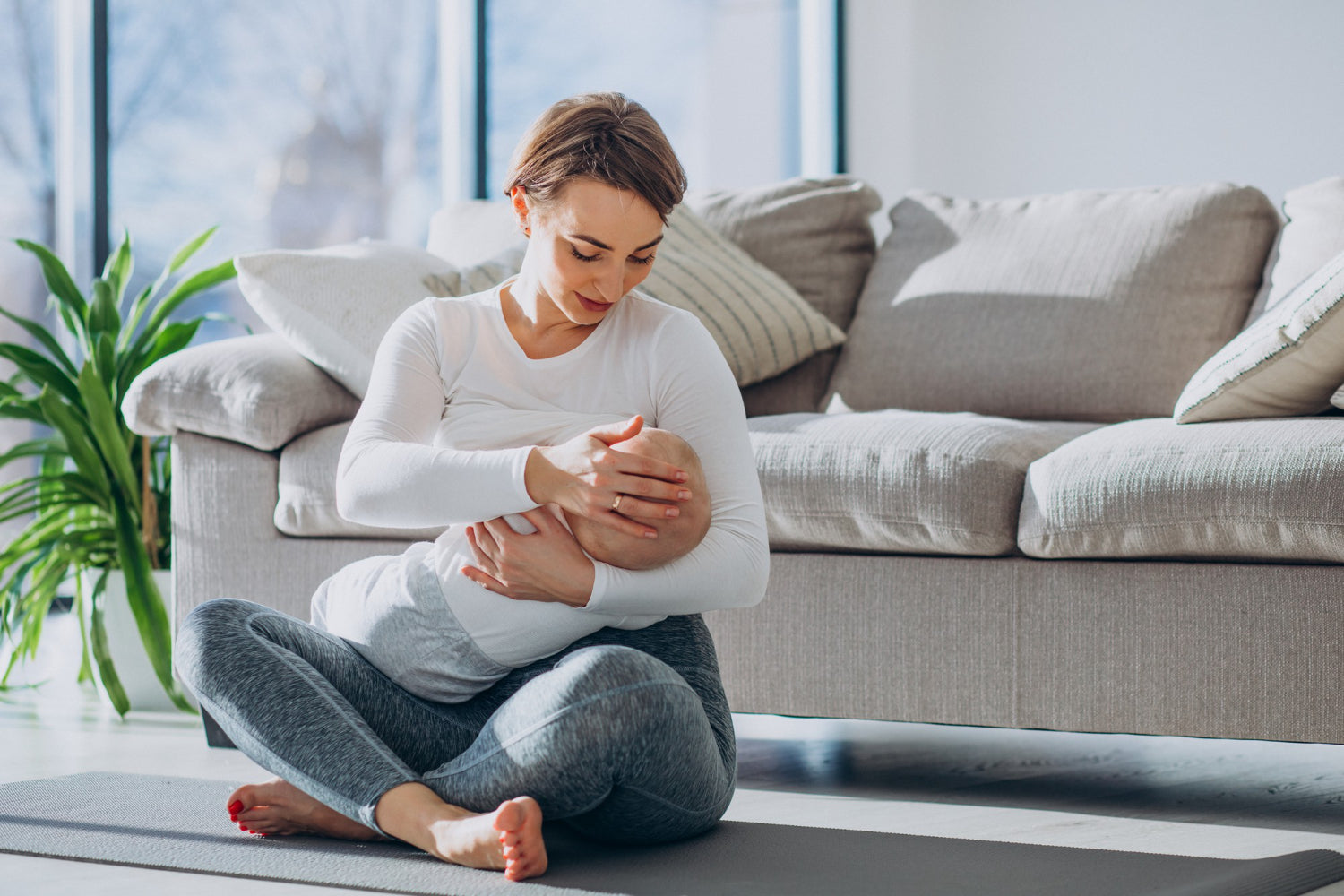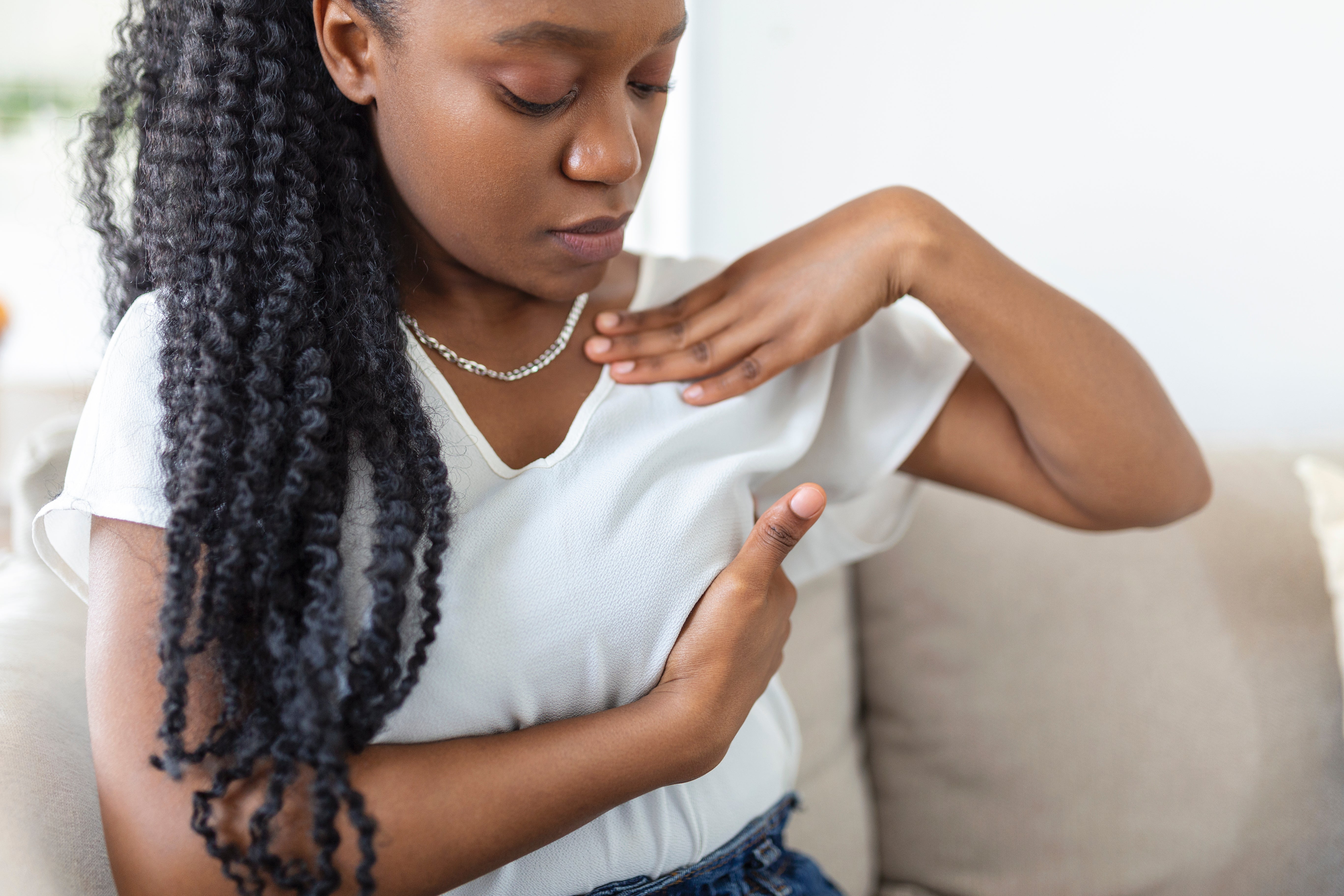TABLE OF CONTENTS
Written by Shelley Cameron
July 08, 2022
When Do Babies Stop Drinking Formula?
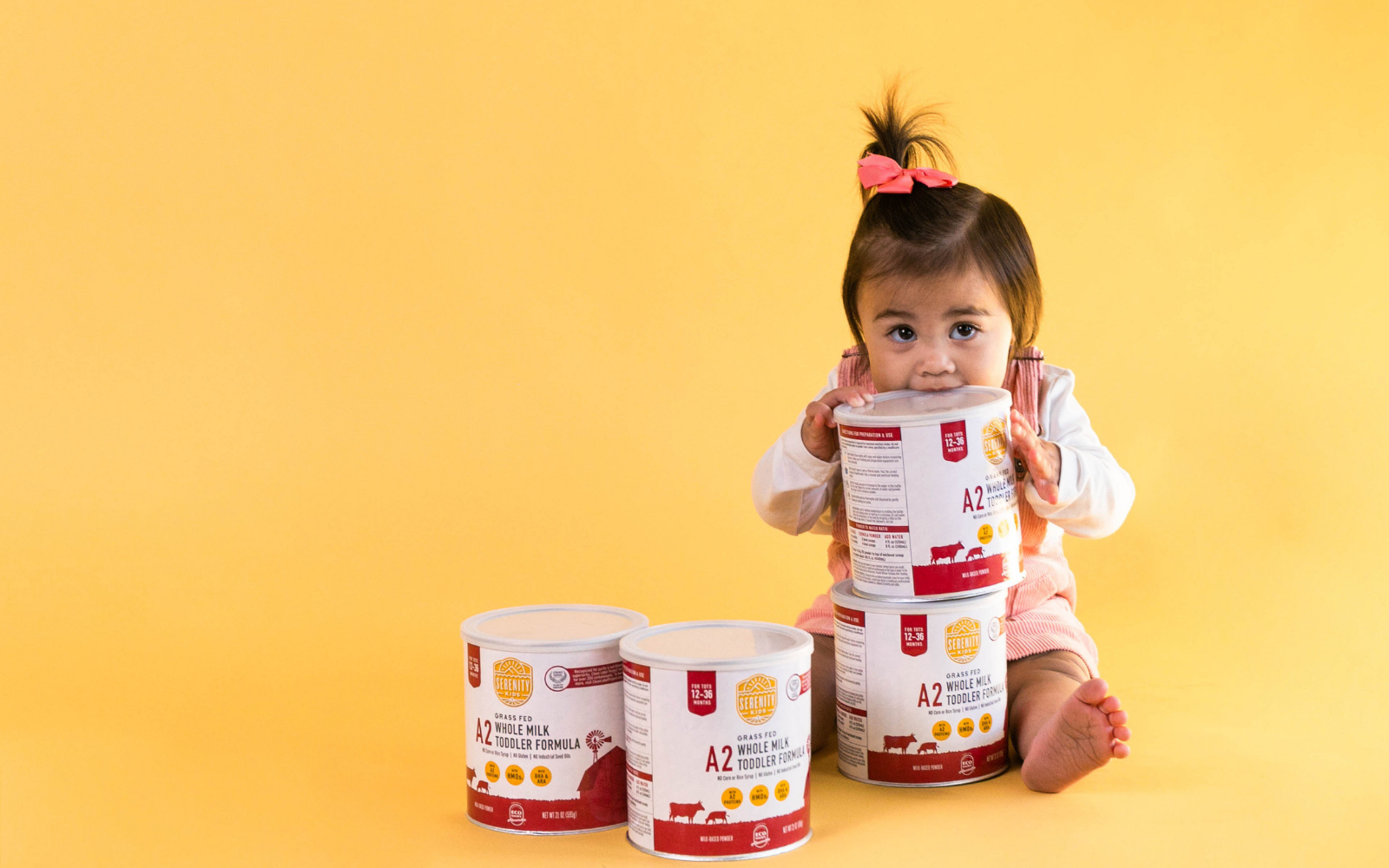
Whether you've chosen to feed your little one with breast milk or formula, 1) you’re the most amazing mama ever and doing a great job 2) there comes a time when your mind starts to wonder… When is the right time to transition from my baby's current drink of choice to cow’s milk or other nutritious drinks?
In this article, we’ll take a look at how long babies drink formula, how to introduce solid foods, how to know if your little one is ready to make the transition to cow’s milk or other nutritious beverages, and how to make the switch as smooth as possible.
We’ll also identify popular dairy-free alternatives for babies who experience milk allergies or are unable to tolerate cow’s milk.
But first, what are the milk alternatives?
Whole cow’s milk is the most popular choice among parents and healthcare professionals for the initial transition away from baby formula and breast milk. However, there are a number of alternatives and each provides different nutrients to help our babies develop and grow during these crucial stages in their development.
-
Goat milk - Well-sourced whole goat milk can be a nutritious choice. It has a very distinct taste that is off-putting for some, but it is tolerated better than cow’s milk by some with sensitive digestion.
-
Pea milk - Milk that contains pea protein is marketed to provide more protein and nutrients for little ones, but they tend to contain inflammatory seed oils, gums, and stabilizers to give it a desirable texture, and poor forms of vitamins like vitamin D2.
-
Nut, seed, or unsweetened soy milk - Options like almond milk often have gums and fillers added to improve texture and prevent separation. They also tend to be fairly void of nutrients, unless they are fortified.
-
Toddler Formula - Toddler formula is designed to help meet the nutritional needs of little ones over 12 months. Our grass-fed organic A2 whole milk formula is free from soy, industrial seed oil, corn and rice syrup, gluten, GMOs, grains, and synthetic folic acid. It is made with only healthy fats and is easy to digest for even sensitive tummies.
-
Bone broth - bone broth is a nourishing beverage that is rich in minerals and amino acids. It’s also great for gut health and immunity. Check out our recipe for liver bone broth and our video on how to make a more traditional chicken bone broth!
When can a baby stop drinking formula?
As your baby's digestive system develops, their bodies will start to adapt to new solid food groups and beverages. At around 6 months of age, your child should be ready to start eating solid foods along with formula or breast milk. You know they're ready when they can sit up on their own with good head control, show interest in food, have started to develop their pincer grasp, and have lost their tongue-thrust reflex. This stage is messy but exciting as you watch your little one explore and try new flavors and textures.
By the time your child is 7-8 months old, they should be eating a variety of healthy foods that could include meats, eggs, vegetables, healthy fats, pureed baby foods, and yogurts and cheeses (for those that tolerate dairy). Our Ethically Sourced Meats Variety Pack and Organic Savory Veggies Variety Pack are a great way to get added nutrients in your baby’s diet — before and after a transition to cow’s milk or other nutritious beverages.
When do most babies stop drinking formula
Babies can continue to drink formula until they are at least 12 months old, as it contains appropriate amounts of iron and vitamin C needed for their little developing bodies. And formula could be offered alongside breast milk or a variety of healthy solid foods to help expose them to more flavors and textures while giving them key vitamins and nutrients they need, like iron and zinc. (PS: for tips on formula prep and storage, check out this post.)
Of course, this timing is a general recommendation and children develop at different speeds. If you have any hesitations or concerns, or if your child has any kidney, liver, or metabolism issues or was born underweight or premature, consult with your health professional prior to transitioning them to cow’s milk.
Knowing if your baby is not ready to start drinking cow’s milk
When deciding when to transition your baby off formula, there are several things to keep in mind. Signs that your baby may need to continue with formula or breastmilk include:
-
They are not 12 months old.
-
They are not gaining weight sufficiently with their growth curve.
-
They were born prematurely.
-
They haven’t established a balanced diet of solid foods for at least 6 months.
-
Your health professional recommends they continue breastmilk or formula. This may apply if your baby has food allergies, problems digesting food, or difficulty absorbing nutrients.
-
You choose to continue to breastfeed.
Certain health conditions may also make it necessary for your baby to continue with infant formula or breast milk, even after they are 12 months of age. These may include conditions that affect the liver, kidneys, or metabolism like phenylketonuria (PKU).
How to make the transition to cow’s milk or other nutritious drinks?
How you choose to start cow’s milk into your infant's diet, will likely depend on how your child responds throughout the transition. You may be able to swap to straight cow’s milk all at once, but most parents find that a gradual approach seems to work better. In this case, you can mix the formula (mixed with water according to label specifications) and milk, slowly increasing the amount of cow’s milk with each bottle or sippy cup.
Another tip is to warm the milk to the same temperature that you usually serve the formula. This could help make it seem more familiar and appealing to your little one.
While you’re making the swap to cow’s milk, you might also consider making the transition from bottles to sippy cups. This transition should take place not long after your little one’s first birthday to help eliminate the risk of milk bottle cavities and tooth decay.
Mixing formula and cow’s milk for a smooth transition
Unfortunately, some children experience issues with their digestive systems, like upset tummies or constipation, during the initial transition. They also just simply might not be a fan of the taste. Luckily, there are some ways to help ease the transition.
Simply start by filling 75% of the bottle, or sippy cup, with formula (mixed with water according to label specifications) and filling the remaining 25% with cow’s milk. After a few days of this mixture, you can transition to 50% cow’s milk. Again, allow a few days for your little one’s body to adjust before progressing to 75% cow’s milk. Finally, you’ll be able to take the final step to 100% cow’s milk.
Depending on how well your little one adapts, and whether or not they experience any tummy issues, this process generally takes 1-2 weeks. It can, however, be quicker or slower based on your family’s needs.
A2 Whole Milk Toddler Formula can provide additional nutritional benefits
You can also incorporate Serenity Kids Grass-Fed A2 Whole Milk Toddler Formula (mixed with water according to label specifications) with whole cow’s milk for added nutritional benefits. Serenity Kids Grass-Fed A2 Whole Milk Formula is a nutrient-rich formula that is easy to digest, made with a unique combination of A2 protein, quality fats, carbohydrates, and various essential prebiotics, vitamins, and minerals.
GRASS-FED A2 FORMULA
To learn more about the benefits of our A2 whole milk formula, visit our article Why Toddler Formula?
How much cow’s milk should my baby drink?
The AAP, recommends children aged 12-24 months consume 16-24 ounces of whole cow’s milk every day.
Most of their nutrition at this point should come from eating solid foods and the milk should be considered more of a beverage than an actual meal. Prior to this, the formula was your child's main source of nutrition, so this may take a little time to adapt.
Your child could continue drinking whole milk until they reach at least 2 years of age. At that point, you can talk with a healthcare professional about other options, if needed.
Don’t stress the transition
Transitioning away from formula or breastmilk can feel overwhelming, but it doesn’t have to be. Take your time and do what feels right. Discuss your options with a healthcare professional to help you make the best decision for you and your little one.
Written by Jennifer Wirth. Jennifer is a professional health writer, leveraging her scientific background as a Chemical Engineer to uncover the most interesting aspects of infant nutrition, pregnancy, and parenting. As a wife and mother of three young children, Jennifer is passionate about providing the best possible nutrition for her family. She believes that developing healthy eating habits early helps build the foundation for a long, fulfilling life.
You Might Also Like
· 1 min read · Recipes
· 7 min read · Education
